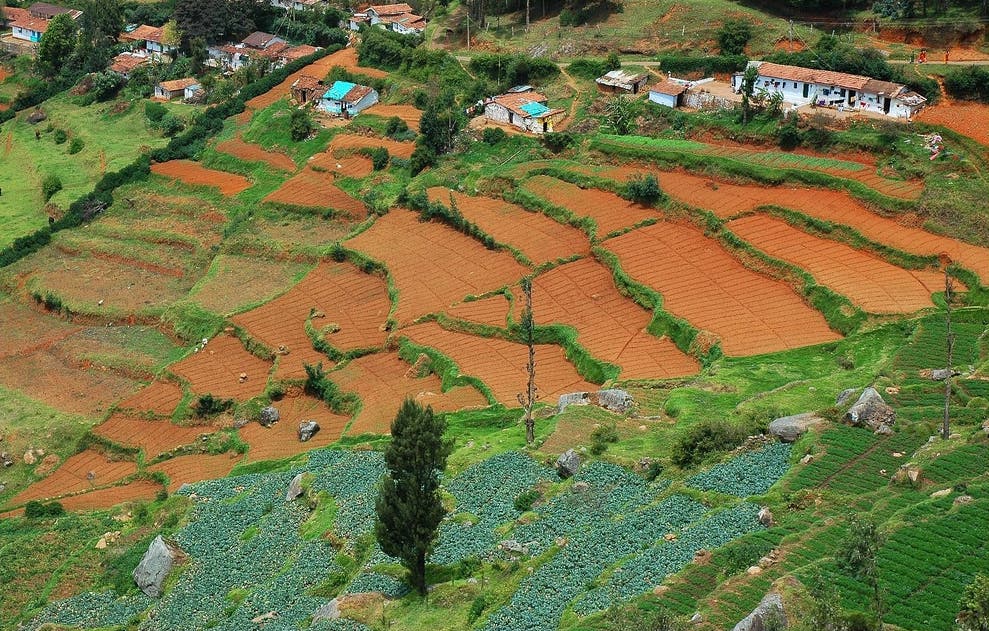Agriculture can help insulate wildlife from the worst effects of climate change, but only if it ditches the current focus on monocultures.

Image credits Rafeek Manchayil / Flickr.
Farmlands can act as havens for wildlife species in a world where climate change is eroding their habitats, a new study explains. However, for that to happen, a shift needs to be made towards mixed cultures. Such a change would also make the farms themselves more resilient against climate changes, which would also benefit us and help solidify the global food supply against environmental shocks.
Although the study focused on bird species in Costa Rica, the team explains that birds can serve as a “natural guideline” for the health of other animal families throughout the world, as well.
Strength in diversity
“Farms that are good for birds are also good for other species,” said Jeffrey Smith, a graduate student in the department of biology and a co-author on the paper. “We can use birds as natural guides to help us design better agricultural systems.”
The team looked at long-term farming practices in Costa Rica and how these impact local bird biodiversity levels. Overall, farms that plant diverse crops can provide habitat for a larger number of bird species than monoculture farms, they found, and are also more stable as habitats over time. Diverse farmlands were also more effective at insulating the species they housed against the ecological damage caused by climate change.
Tropical areas and the rainforests that thrive there are “expected to suffer even more intensely” due to climate change than other areas, explains Gretchen Daily, director of the Stanford Natural Capital Project and the Center for Conservation Biology, and a senior author on the paper. Climate change will lead to longer dry seasons along with more and longer intervals of extreme heat, which will lead to more forest dieback — the process in which woody plants start dying from the leaves (and other peripheral parts) down due to harsh environmental conditions, pathogens, or parasites.
Climate change is already having an impact on wildlife, and, given the tectonically-slow rate of international action on the issue, there’s little reason to believe this effect will end soon. The paper explains that farming practices “really matter” when trying to boost climate resilience and protect biodiversity. Given the speed with which ecosystems can completely break down, and considering the importance of ones such as the Amazon Rainforest in the global carbon cycle, that’s definitely something we should be working towards.
As tropical areas are one of the most biodiverse in the world, the team focused their study on Costa Rica, using birds as a proxy for biodiversity at large.
Tropical Troubles

Image credits Susanne Nilsson / Flickr.
As rainforests are cut down to make room for plantations of bananas or sugarcane, the amount of habitat available for wildlife shrinks — we’ve been clearing a lot of forest in the last few years, so that available habitat has shrunk quite dramatically, the team explains. At the same time, climate change is making dry seasons longer and hotter, placing even more strain on the animals living here and the plants which support them.
“It’s the one-two punch of land-use intensification and climate change,” said Nick Hendershot, a graduate student in the department of biology and lead author on the study.
“Wildlife populations are already severely stressed, with overall decreased health and population sizes in some farming landscapes. Then, these further extreme conditions like prolonged drought can come along and really just decimate a species.”
The study drew on 20 years’ worth of field data to map which species of birds live in natural tropical forests and in different types of farmland. Costa Rica has various agricultural systems in place throughout the country, which gave the team a chance to compare and contrast monoculture systems, diversified multi-crop farms, and natural forests. Monoculture farms analyzed in the study included pineapple, rice, or sugar cane, while ‘diversified’ farms either mixed several types of crops or were bordered by ribbons of natural forest.
All in all, diversified farms harbored more species of common birds, but also provided shelter for some of the most threatened ones — species such as the Great Green Macaw and the Yellow-naped Parrot, listed as Endangered and Vulnerable, respectively, on the IUCN Red List.
In farms that practiced intensive monocropping, however, the team found that biodiversity levels declined over time.
“Which species are in a given place makes a huge difference — it’s not just about numbers alone, we care about who’s there,” said Daily.
“Each bird serves a unique role as part of the machinery of nature. And the habitats they live in support us all.”
There is a lot of room to expand on diversified farming, both in Costa Rica and around the world, the team reports. It wouldn’t benefit just wildlife — mixed farming practices have been shown to boost crop yields, and they increase food security by making the crops more resilient against environmental shocks.
“There are so many cash crops that thrive in diversified farms. Bananas and coffee are two great examples from Costa Rica — they’re planted together, and the taller banana plant shades the temperature-sensitive coffee bean,” Daily added. “The two crops together provide more habitat opportunity than just one alone, and they also provide a diversified income stream for the farmer.”
I’d call that a win-win!
The paper “Intensive farming drives long-term shifts in avian community composition” has been published in the journal Nature.


